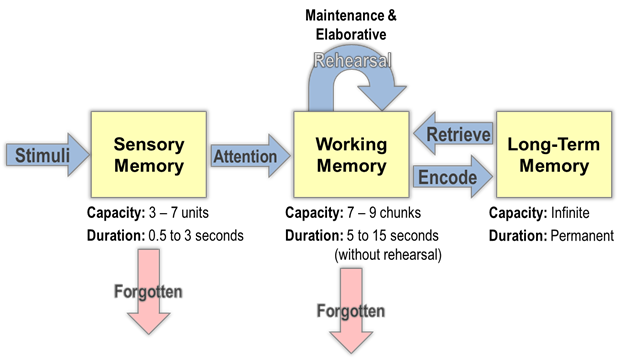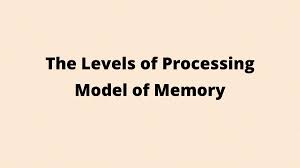Why does one memory stand out above another? In the fields of psychology and neuroscience, this is a significant question. Understanding how we process and store memories may provide crucial insights into how the brain functions, how we form our worldviews, and how to improve our own quality of life.
I’ll go over the three main tenets of the Levels of Processing Theory in this article and offer three suggestions for incorporating them into your e-learning course design.
What Are Craik And Lockhart’s Levels Of Processing Theory?
A pyramid is used in this theory of memory to illustrate the “hierarchy” of various levels of processing, from shallow to deep. The deepest processes are more likely to “stick,” whereas the shallower processes, such as structural processes, are less likely to do so.”
Structural Processing
When something’s physical appearance is encoded, structural processing takes place. For instance, we might take note of a word’s color or whether it is written in all capital letters. Color, size, shape, or other physical characteristics of a stimulus may be taken into account during structural processing, also referred to as orthographic or visual processing.
It’s not necessary to think deeply about this kind of processing. Just as it is, we simply accept the stimulus. It requires maintenance rehearsal, or repetition, in order to stick in our short-term memory. Maintenance rehearsal doesn’t stick as effectively as elaboration rehearsal, but we’ll get to that in a bit.
Phonemic Processing
Although phonemic processing is an improvement over structural processing, it is still a limited method of information processing. When we take in sounds, it happens.
Let’s imagine that you are perusing a list of words: play, bottle, door, and chair. Which of these words has two syllables, I ask you? Alternatively, I enquire as to which word rhymes with “hair.”
You must mentally pronounce each word and count its syllables in order to correctly respond to the question. You can also compare the sound of each word to the sound of the word “hair.”
Despite still being regarded as a more basic form of processing, phonemic processing frequently has a higher recall rate than visual processing. In order for the stimuli to stay in your short- or long-term memory, maintenance rehearsal is also necessary.

Semantic Processing
Semantic processing is the most sophisticated type of processing. This involves processing information about the meaning of the word.
Semantic processing, in contrast to phonemic and structural processing, encodes information about the meaning of a word, its relationships to words around it, etc. for the word “hair,” for example.
We encode semantic information differently because semantic processing goes deeper than visual or aural information. It involves elaboration rehearsal. We may think about how the stimuli fit into our daily lives, the task at hand, etc. during elaboration rehearsal.
It is simpler to recall information later thanks to this more thorough interaction with the stimuli.
Strengths And Weaknesses Of Levels Of Processing Theory
Keep in mind that this is just one type of memory model. It has benefits and disadvantages when compared, for instance, to the Multi-Store Model of Memory.
The presence of elaboration rehearsal is one asset. The Atkinson-Shiffrin model only involves repetition or maintenance rehearsal. The Levels of Processing Theory demonstrates the value of “playing” with a word rather than just hearing or looking at it. It’s simpler to retain a word in long-term memory when it’s placed in context.
Another advantage of this model is that it explains why some stimuli are easier to remember than others. Other models raise concerns about why some things are more likely to be remembered.
It’s not perfect, though, and it’s not always simple to measure precisely how deep these processes go. In 1973, Craik defined depth as “the meaningfulness extracted from the stimulus rather than in terms of the number of analyses performed upon it.”
But how can you tell if one word has more meaning than another? How is that even possible to weigh on a scale? How does this relate to using the levels of processing theory in a classroom setting or while you’re studying?
How To Apply The 3 Levels Of Processing Theory In Elearning
Encourage Online Learners To Explore The Topic On Their Own
A type of deep processing is elaborate encoding. By thoroughly examining a topic, it enables online learners to learn more about a concept and improve their knowledge retention.
You can facilitate this in your eLearning course design by integrating self-guided eLearning courses, such as inquiry-based eLearning activities that focus on a specific concept.
Online learners must use online resources to compile the information and then put it into their own words to create the finished product, like an eLearning blog or an online presentation.
Tie New Information To Preexisting Knowledge
If information is connected to prior knowledge, online learners are more likely to remember and recall it. They form a connection between the related concepts in their mental schemas, which allows them to process them on a deeper level.
Include real-world examples, case studies, eLearning stories, and interactive online exercises that introduce new concepts and put their prior knowledge into practice.
Include Elearning Simulations That Focus On Elaboration Rehearsal
Reading about a subject is one thing, but engaging with it firsthand and putting knowledge to use can greatly improve knowledge retention. Develop eLearning scenarios that offer your online learners the chance to explore the consequences of their actions and explore a variety of different decision paths.
These eLearning simulations also allow them to delve into the concept and connect with the eLearning content on a more meaningful level. The fact that these eLearning exercises rely on automatic knowledge assimilation ensures that information processing is not hampered.
Conclusions
Although Levels of Processing Theory is frequently portrayed as a generalization about how we process information, it still offers helpful insight into efficient study techniques. Deeper processing will result in easier memory retention of information.
As such, we must create interactive and engaging eLearning content that ties into previous knowledge in order to achieve the desired results.

